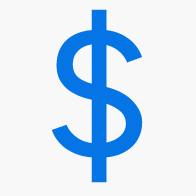The Next Phase
A lot is being made of remarks from Federal Reserve Chair Janet Yellen earlier this week and the likelihood of the Federal Reserve raising rates as early as December. This is because, all else being equal, the US economy no longer warrants emergency level interest rates. Fridays US jobs report added further evidence to this, and that in fact the lame payroll numbers of August and September look more to be anomalies than a slowdown of the US economy, which was immediately impacted by economic instability in Asia. With the anticipation of action from the US Fed in December, it seems likely to expect a second phase of US dollar strength.
For starters, the global economy is shifting back to a precedent where US financial markets remain the most attractive home for capital on a relative basis. Over the previous couple of months anticipation was that like the Federal Reserve in the US, the Bank of England was ready to adjust rates higher, but policy uncertainty there in the last week has led forecasters to look to the latter half of 2016 for a rate rise. Furthermore, during this current period the global economy finds itself in a similar situation where the US sits alone as the only western central bank with a tightening bias, and is almost akin to September 2014 when the first wave of dollar strength began.
Another cautious sign was revealed in a research note by Bank of America Meryl Lynch earlier last week that money is fleeing out of Canada at the fastest rate of the 10 major developed economies. The author examines two main factors, and the first is that Canadian investors and money managers are looking to US financial markets for better opportunity. The second is perhaps a more troubling sign that Canadian businesses are merging with or acquiring firms abroad as apart of 73 billion dollar outflow in acquisitions so far this year. Very simply this is money leaving the country because there are better prospects elsewhere. And it is without a doubt that there was anticipated to be a flight of capital from a decrepit energy sector, and it’s resoundingly clear that opportunities domestically are few and far between.
Bank of Nova Scotia estimates the Canadian dollar could go as low as 72 cents by the first quarter of 2016, and that forecast sounds bullish compared to some of the independent forecasters for the loonie. The reality though is that it fits into a scenario where we are about to embark on another phase of weak commodity prices and US dollar strength. That is why in turn Bank of Nova Scotia doesn’t see oil prices recovering until at least the end of 2016. Further to this, CIBC Economics Department wrote a very important note a few months back directed at firms that hedge their foreign exchange risk, and their message was clear. The downside is limited with a loonie that is ‘fair value’ around 78 cents, and it’s not likely we’ll overshoot back into the 80-cent range. Albeit, there’s always reason to be wary of a consensus call, but the evidence for another wave of US dollar strength seems overwhelming.
A final thought is how this theme encompasses precious metals. Gold is currently retesting the August low of 1,085 US per ounce. Further downside would almost be anticipated with a hike in interest rates, but the shallow liquidity of the gold market and its quick readjustments encourage that this news has already been priced in. In less than two weeks the price of gold has given back 90 dollars. Whether support at the 1080 level holds will be the ultimate question, but with the next phase of conversation around the US Fed will not be when they raise rates, but when can they do it again and to what level. My call is for eventually lower gold prices, but the downside will be short-lived.




